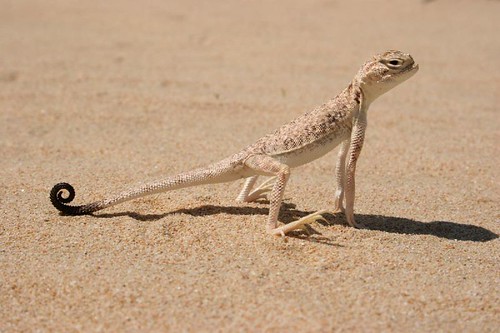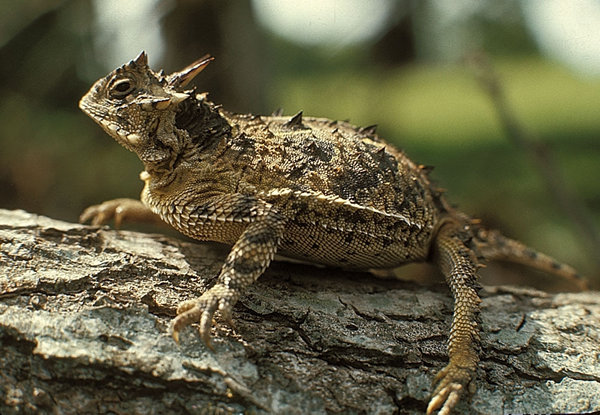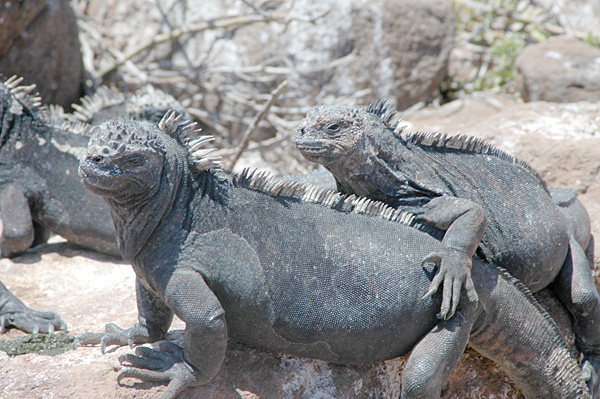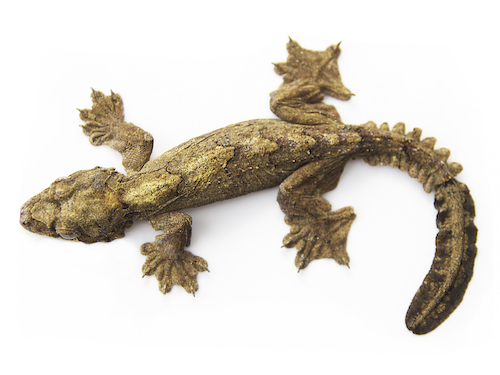Lizards are reptiles with more than 5,600 species. These creatures can be found across almost all continents and are characterized by their overall lapping scales—the defining feature of suborder Lacertilia. Lizards typically have feet and external ears, as well as movable quadrate bones like snakes. One of the most interesting about lizards is their ability to detach their tails to escape their predators. They also communicate through body language and pheromones, which refer to the bright colors on their bodies. Generally, these creatures have one-of-a-kind personalities and great camouflage techniques. They are known to give people creeps, but they can also be among the most interesting creatures in the world because of their diverse physical characteristics and behaviors. Here is a list of the 10 weirdest lizards in the world:
10. Phrynocephalus Arabicus

Photo Source: www.flickriver.com
More commonly known as the toad-headed agama, Phrynocephalus Arabicus is a lizard from the Agamidae family or the chisel-teeth lizards. They are primarily characterized by their compressed, fused teeth that are attached to their upper jaw. They are weird because most pictures of lizards commonly have loosely attached teeth. These lizards also have the excellent ability to change their body color that is why they are dubbed as the chameleons of the Old World. They also have a wide, strong, and flattened body that is covered in rough skin, as well as a tail that is flat though rounded at the base to one another by curling and uncurling their tails, vibrate their bodies to bury themselves quickly in sand and will frighten away predators with a set of bizarre-looking, colorful mouth flaps, seen here.
9. Brookesia Minima

Photo Source: www.arkive.org
Brookesia Minima or minute leaf chameleon is considered as the smallest species of stump-tailed chameleons. These lizards facts are characterized by their cylindrical and lichen-like-striped bodies, often camouflaged in different shades including brown, grey, and green. They are weird because they have tiny and relatively flat heads, as well as downward pointing and short snouts. Their scales are also small and spiny compared to other lizards, and they run along each side of the backbone. Male Brookesia Minima can measure up to 28 mm, shorter by 5mm compared to their female counterparts.
8. Phrynosoma

Photo Source: biology.uoregon.edu
More commonly known as horned lizards, Phrynosoma is a unique genus of lizards characterized by their specialized morphological, behavioral, and ecological adaptations. Among their defining characteristics are their dorso-ventrally flattened bodies, exceptionally large stomachs and the sharp spines around their occipital regions. What also set them apart from other species of lizards are their variable body temperatures and apparent reluctance to run when they are approached by large animals. Their diet mostly consists of large ants and beetles. These lizards can also stay active over a longer period of time compared to other lizards.
7. Moloch Horridus

Photo Source: www.blueplanetbiomes.org
Also called Thorny Devil, Moloch Horridus is a species of lizard characterized by its body that has conical spines all over. Even the areas above each of its eyes and hump behind its head are also filled with spines and thorns. The spines of this lizard are what make it easy to identify, as well as its color that ranges from reddish brown to black. Though it appears creepy because of its spines, this lizard is harmless. Another characteristic of this reptile is that it lifts its tail when it walks, and it walks in a shaky way.
6. Hydrosaurus Pustulatus
.jpg)
Photo Source: eol.org
What sets Hydrosaurus Pustulatus apart from other lizards is its body size that can reach up to a meter in length. Also known as sail-fin lizard, this reptile has a rather spectacular appearance because of its well-developed crest and the tooth-like scales from its nape down to its back. Its most defining feature is the erect ‘sail’ of skin on its tail that reach up to eight centimeters high, making it an excellent swimmer. Unlike other lizards, these lizards also have flattened toes which allow them to easily swim through the water. This is one of the rarest facts about lizards with this kind of specie.
5. Amblyrhynchuscristatus

Photo Source: yellowtogreen.blogspot.com
Amblyrhynchuscristatus is a species of marine iguanas dwelling in the islands of Galapagos. They are weird not mainly because of their physical attributes but because of their lifestyle. These lizards boast of a lifestyle that no other reptile can imitate. They are known to spend their entire lives diving into the water to look for some food to eat, particularly green algae, so they dominate the shorelines the way penguins and sea lions do. Another weird thing about these weirdest lizards is that they use their jaws to scrape algae from the submerged rocks in the sea.
4. Flying Gecko

Photo Source: animals.pawnation.com
Flying geckos are tropical lizards known for their small body and striking adaptation abilities. These lizards reach about six to eight inches from tongue to tail tip. They are characterized by their prominent skin flaps as well as their incredible ability to camouflage and blend in with their habitats. The most unique feature of these lizards is their gliding behavior. They extend their legs and tails so they can guide from one tree to another. No wonder why these lizards species cannot be seen right away because of their natural ability to hide and blend well with the environment.
3. Heloderma Suspectum

Photo Source: www.reptilesofaz.org
Also known as the Gila Monster, Heloderma Suspectum is a stout lizard that has a short and fat tails. Its body is covered with hard, rounded, and bead-like scales and its tongue is forked and dark. Unlike other lizards, the Gila monsters are relatively lethargic and slow-moving. They spend most of their time in underground burrows and only come out and turn active around three weeks every year. These lizards are not inherently aggressive, but they are forced to become such when they are attacked or captured. One of the most important markings of Gila monsters are their reticulated and mottled patterns. All lizards and other animals have different characteristics, and responses according to human’s approaches to them. Either they will treat you as comrades or an intruder to their habitation.
2. Bipes Biporus

Photo Source: eol.org
Bipes Biporus are worm lizards characterized by their elongated and pink bodies. They are the only amphisbaenian that have limbs. The forelimbs of these lizards are small yet well-developed, and unlike most lizards, they have five digits on each limb. Like the Gila monster, worm lizards rarely emerge from the ground as they reside in tunnels in the soil. They can be easily identified through their lateral undulation and concertina locomotion, which is common among reptiles without limbs.
1. Varanus Komodens

Photo Source: www.arkive.org
Known as the largest lizard in the world, Varanus Komodens or Komodo Dragon has a heavy-set body, long, stocky legs and long, muscular tail. Its body is covered with gray-brown scaly skin all over. This lizard is easy to identify because of its yellow head and because of the striking pattern of its body, which involve diverse combinations of bands and speckling that come in yellow, gray, green, and brown colors. Even its tongue is forked and yellow, resembling those of fire-breathing dragons.
